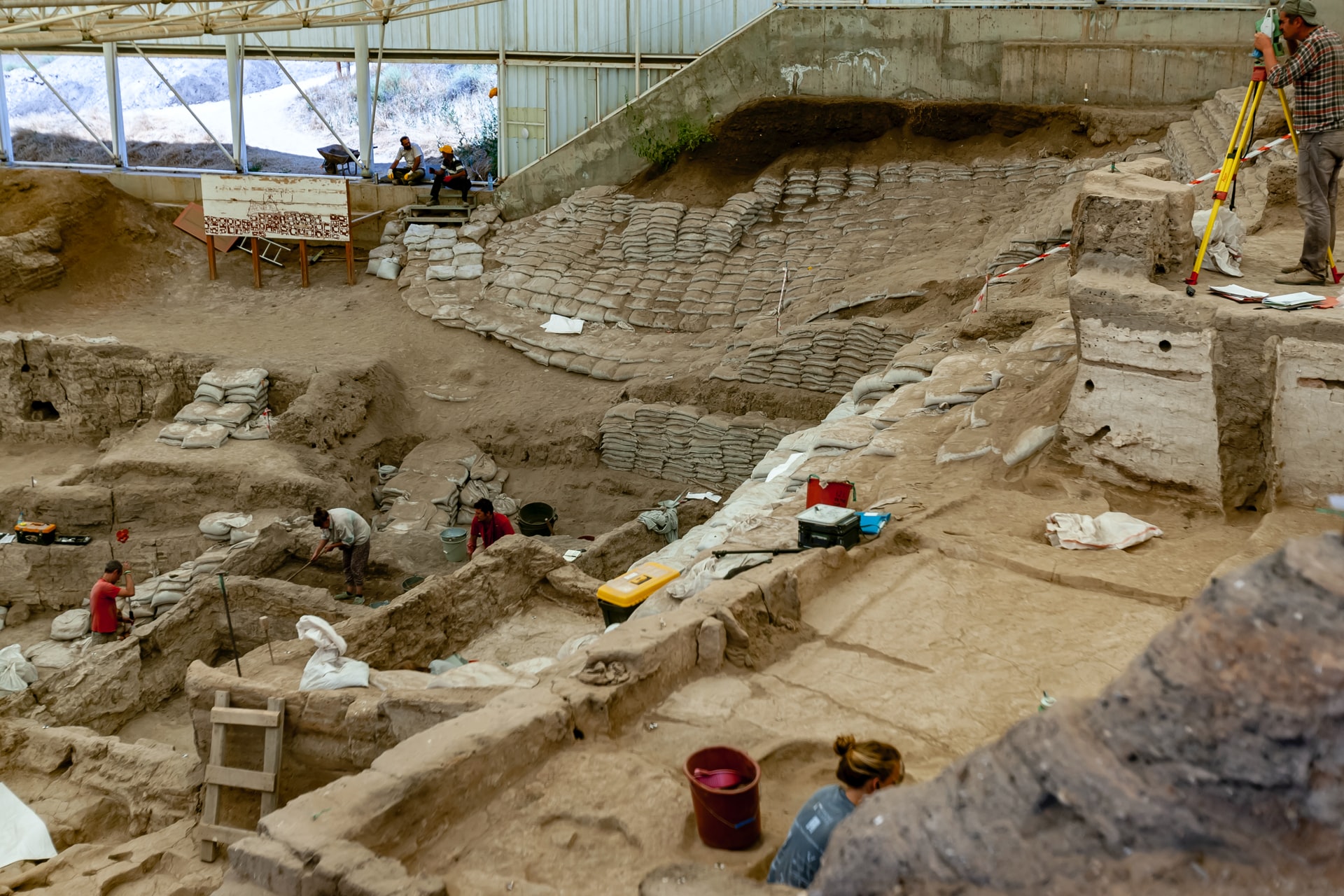Our plant machinery is used by countless industries across the UK including construction, agriculture, quarrying and groundworks. An industry that might not have crossed your mind is archeology. The UK, and more importantly, what’s buried beneath it, is brimming with history, home to hundreds of internationally important sites across the country. From finding kings in car parks to ships in Suffolk estates, archeological digs take a massive amount of preparation, hard graft, and require a lot of heavy duty machinery and specialised equipment to help them uncover interesting artefacts of cultural history. In this blog we have compiled a collection of digging and surveying equipment commonly used to see a dig through to the end.
Field Surveying Equipment
There are many different specs and types of surveying equipment but their main purpose is generally the same. Wessex Archeology explains that it is ‘basically a traditional theodolite for measuring angles combined with an electronic distance measure (EDM) and a computer/data logger for processing and storing the measurements.’ They are used for any task where accuracy and precision is imperative and also can record tall structures and buildings that are in the vanicity.
Ground Penetrating Radar
This is used a little bit like a lawn mower. Pushed by hand, this geophysical device is used to capture high resolution radargrams. It works by puncturing the surface with small spikes that send radar pulses into the earth then records images of the subsurface of the ground. This in layman’s terms means, before starting a dig, Archeologists can ascertain what sort of earth they are dealing with and can inform the next steps of the dig. It can recognise material such as concrete, asphalt, metals, pipes, cables or masonry. They don’t want to be upsetting any local communities by hitting a major water pipe. It can also give some indication as to how deep down they need to go. Again, this will help the archaeologists put a strategy in place in terms of what plant machinery they might require.
Excavator
Most sites, especially larger sites that are submerged by old buildings/structures will need some attention from a mechanical digger. From beastly bulldozers to 22 tonne excavators, these machines are used to remove the ‘crust’ if you like, so archeologists can access the softer soil beneath. This is why the radar data comes in handy, so no one gets too digger happy and avoids any irreversible mistakes. Once the hard exterior has been removed mini excavators and handheld shovels can be used to dig with more precision.
The plant that we see used most for archeological digs is our 14 tonne excavator with a bucket attachment. These are specifically requested to have 1.8 metre wide trenches, and a 1.8 bladed bucket. In our experience, archeologists will be provided with an excavator where the bucket attachment is the wrong size. At rockthorn, we understand that you are the experts in your field, and will always listen to any niche or specific requirements you might have.
Excavator with breaker attachment
Sometimes digs can be in awkward places. Take old King Richard III for example. Hidden deep beneath a car park in Leicester, a breaker attachment would have been necessary to bite through the top layer of concrete. Without one of these bad boys, there was no chance of exhuming his remains.
A Guy
Most archeologists aren’t trained in these larger machines. So we can lend you a guy who is. We will leave the more intricate digging to the professionals! Check out our operated plant hire options for help and advice for any upcoming digs.
Pickaxe/Mattock
Time for the manual labour to really begin. A staple of any archeologist’s tool belt; pickaxes’ or mattocks are used to get a little more precision whilst moving the earth. As the dig gets closer and closer to exposing the artefacts, extra care and precision must ensue. A tool of this size bridges the gap between the heavy duty stuff and the really intricate stages of excavation.
Brushes and Picks
You may have noticed the tools getting smaller and smaller. As we scale down, the work gets more and more delicate. Depending on what is being excavated, a myriad of intricate tools are used to uncover the details. For really ancient bones for instance, it is essential that brushes are used to delicately remove the surrounding debris so no findings are tarnished or broken during the process.
Whether you are hoping to dig up dinosaur bones on a Jurassic pursuit or simply want to re-landscape your garden, Rockthorn can provide you with the plant machinery you need to get cracking. Let us know about your project, big or small. We’d love to hear from you. Call us on 0330 118 5030 or email us at hire@rockthorn.co.uk
